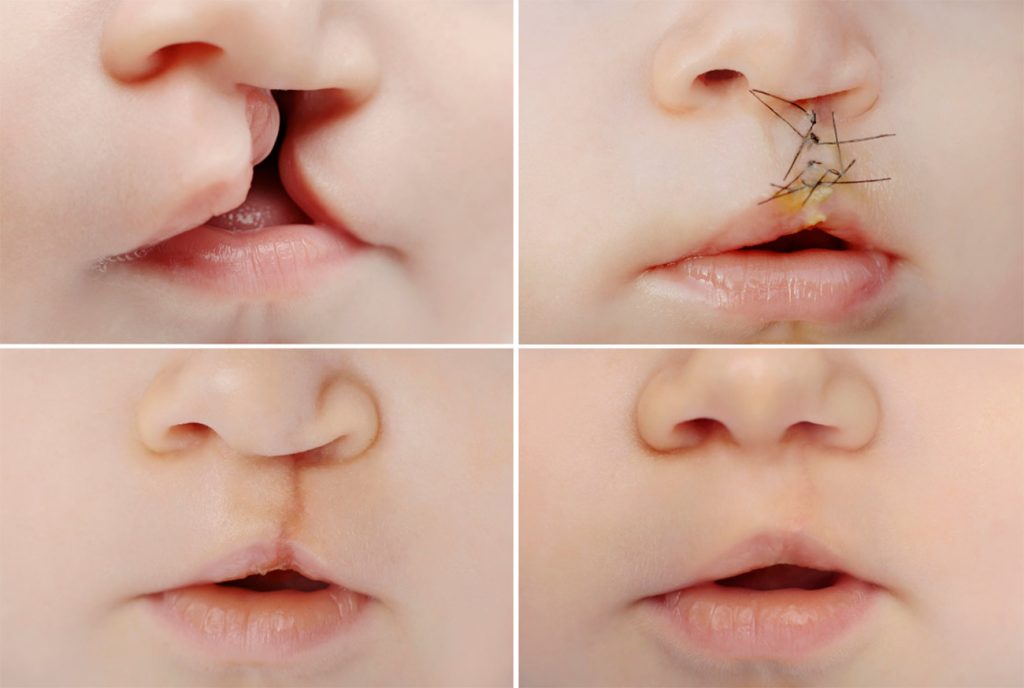Procedures
Cleft Lip and Palate
OMS work with multidisciplinary teams to help provide comprehensive care and treatment from infancy to adulthood.
During early pregnancy, separate areas or buds of your baby’s face develop individually and then join or fuse together. This failure of fusion results into a slit or separation of the face called a cleft. If the buds of the lip do not fuse together, it is called a cleft lip. If the buds of the palate (roof of the mouth) do not fuse together, it is called a cleft palate. If both the buds of the lip and palate do not fuse together, it is called a cleft lip and palate.
Cleft lip and cleft palate is basically a failure of fusion, but not a missing body part. They are among the most common birth defects affecting children in North America. The cleft can affect one or both sides of the face and can vary in severity.
Repair of a cleft lip and/or palate requires multiple surgeries. The number of surgeries varies depending on the severity of the cleft. All of these surgeries are usually performed under general anesthesia (asleep and pain free).
A cleft lip is usually repaired by the time your baby is 3 to 6 months old. The surgery will improve your child’s facial appearance but also help for sucking and to form certain sounds made during speech.
A cleft palate repair occurs by the time your baby is 6 to 12 months old. The palate is usually repaired in 1 or 2 surgeries, depending on the severity of the cleft. This surgery will help your child’s speech and eating, by preventing air, food and liquids from going up into the nose.
A cleft in the gum may occur in association with a cleft lip. This may range from a small notch in the gum to a complete division of the gum into separate parts. The cleft of the gum is repaired with a bone graft, and is usually performed between 6 and 12 years old depending on your child’s dental development. This surgery is important for your child’s teeth and jaw growth.
The team of health care specialists might recommend other treatment or surgery to improve your child’s function and appearance. These may include, but are not limited to: speech therapy, orthodontic treatment (braces), corrective jaw surgery, ear tubes or hearing aids, lip and nose revision surgery, dental implant and restorations, etc.

Who will I see?
When treating cleft lip and palate, it is important to consider appearance, function, growth, speech, hearing, nutrition, and psychological development. A team of health care specialists (cleft team) will work together to evaluate and treat your child. The Oral and Maxillofacial Surgeon will play a key role to restore the appearance and function of children born with cleft lip and/or palate.